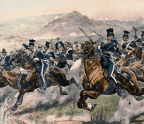THE MAGINOT MENTALITY

Over the course of nearly a century the military moniker “Maginot Line” has become something of a punch line—a euphemism, according to Merriam-Webster, for any “defensive barrier or strategy that inspires a false sense of security.” A belief prevails among historians that the line’s failure to stop or even impede Germany’s stunning 1940 blitzkrieg assault enabled the rapid Nazi takeover of France. The truth is more nuanced, involving sophisticated planning and technology, but ending, ultimately, with abandonment at the highest levels of the French war machine.
The concept of a fortified defensive barrier between France and its archenemy, Germany, first surfaced in the early 1920s. Less than a decade before, in the early days of World War I, France had suffered an invasion and humiliating partial occupation by Germany. As a result, a number of the conflict’s most devastating battles raged on French soil. The loss of life was nothing short of cataclysmic, wiping out nearly an entire generation of young men. The postwar government was determined not to let such an invasion happen again. While some French political and military leaders met the proposal with skepticism, supporters of a defensive line carried the day.
Engineers undertook a number of feasibility studies, and in 1927 the French government approved the basic concept. The Commission for the Organization of Fortified Regions (CORF) would design the barrier and assume responsibility for its construction and maintenance. The line was not the brainchild of its namesake, André Maginot; that bit of folklore derived from a 1935 newspaper article. Maginot was, however, the second of two persuasive ministers of war—the first being Paul Painlevé—who lobbied tirelessly for the funding to construct the barrier.


After considerable debate, organizers signed off on a plan for an interdependent chain of fortified installations
You’re reading a preview, subscribe to read more.
Start your free 30 days



